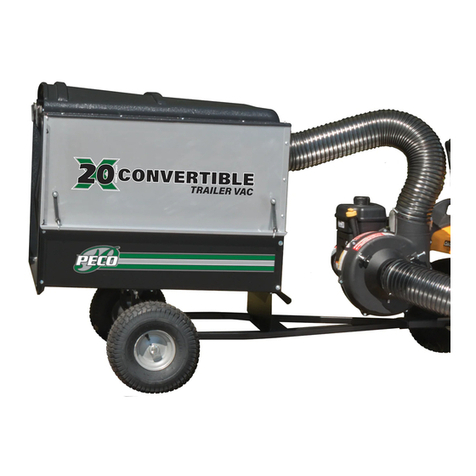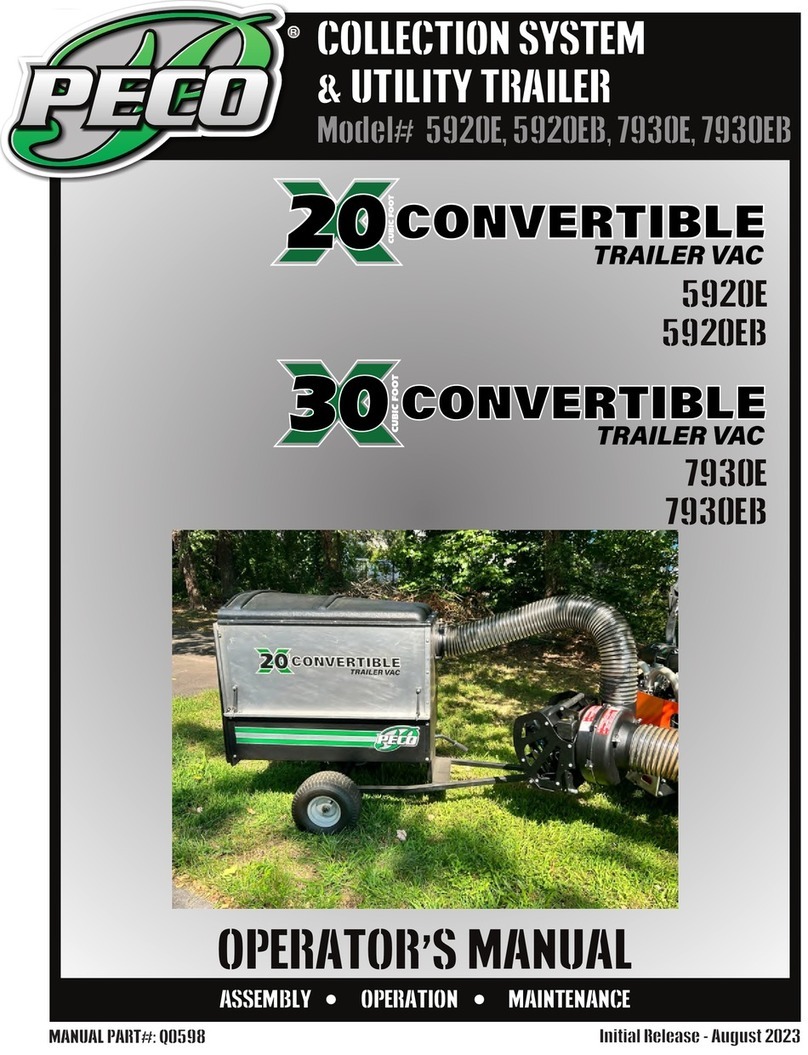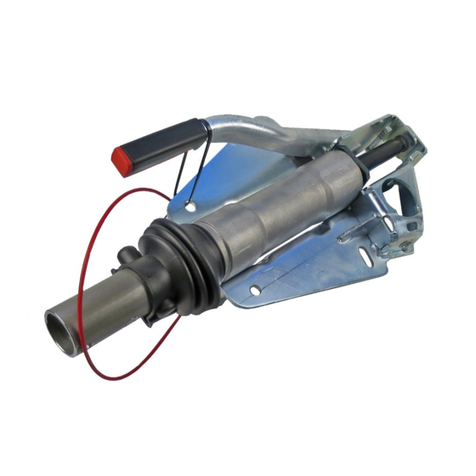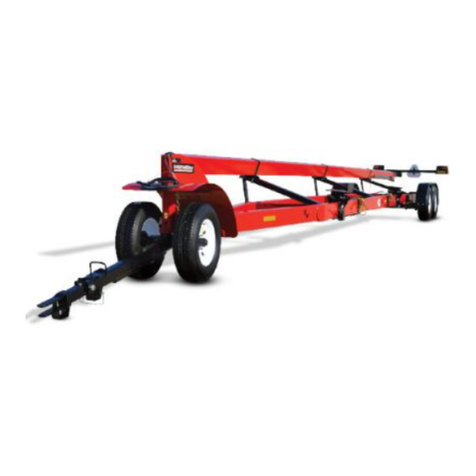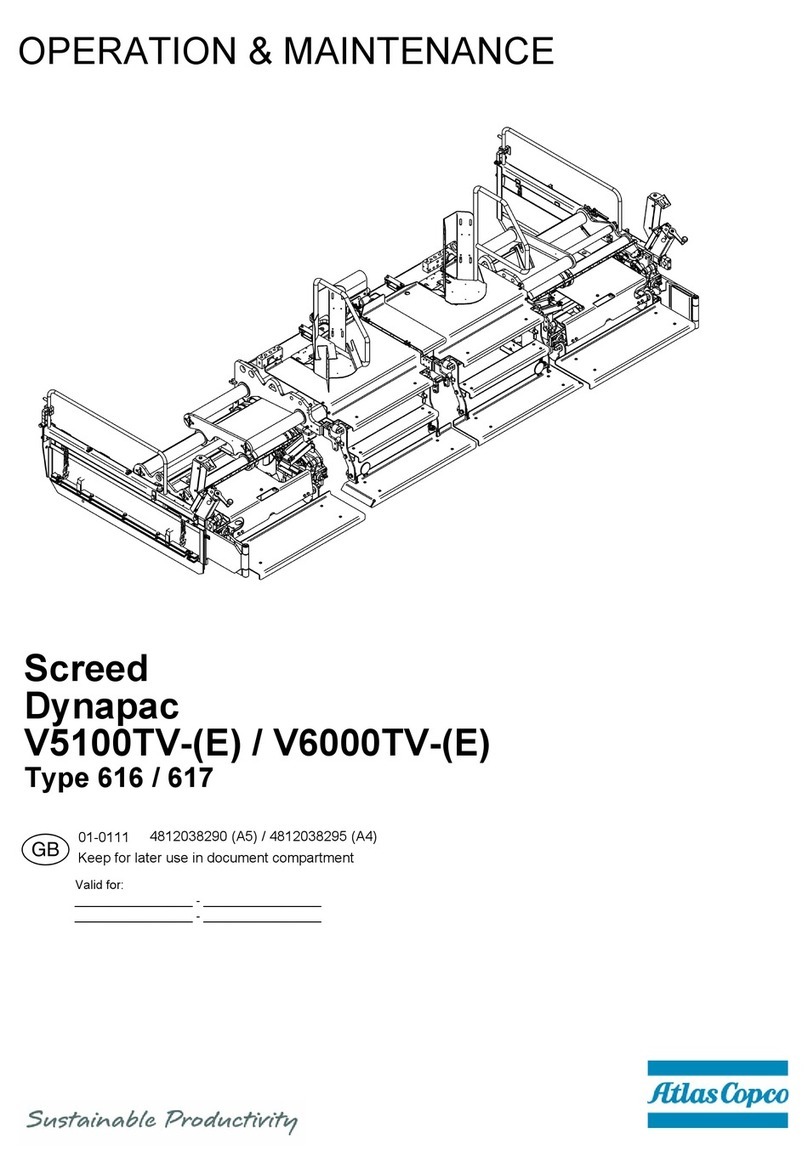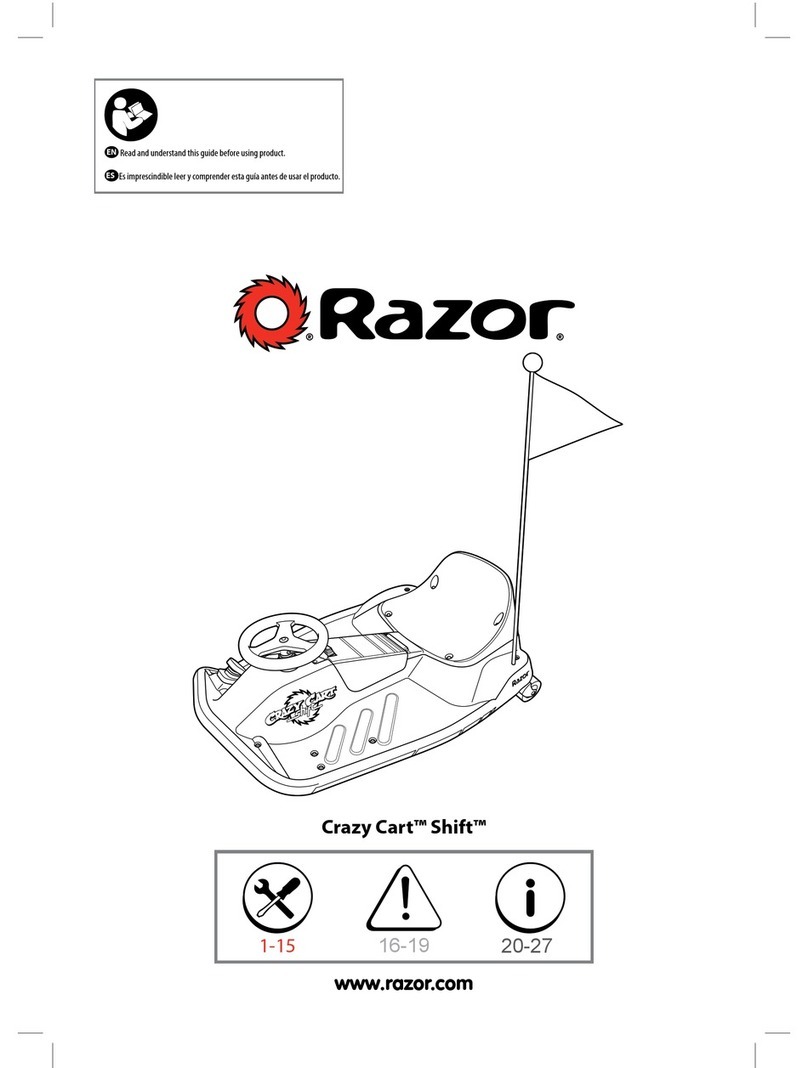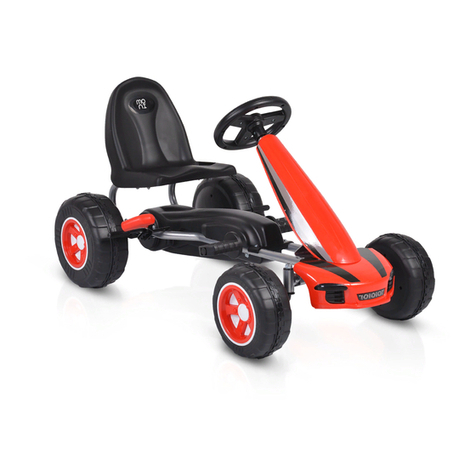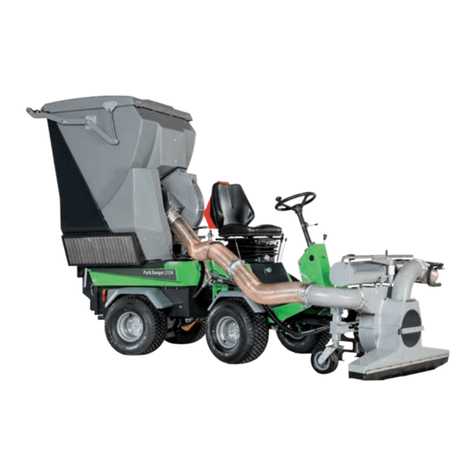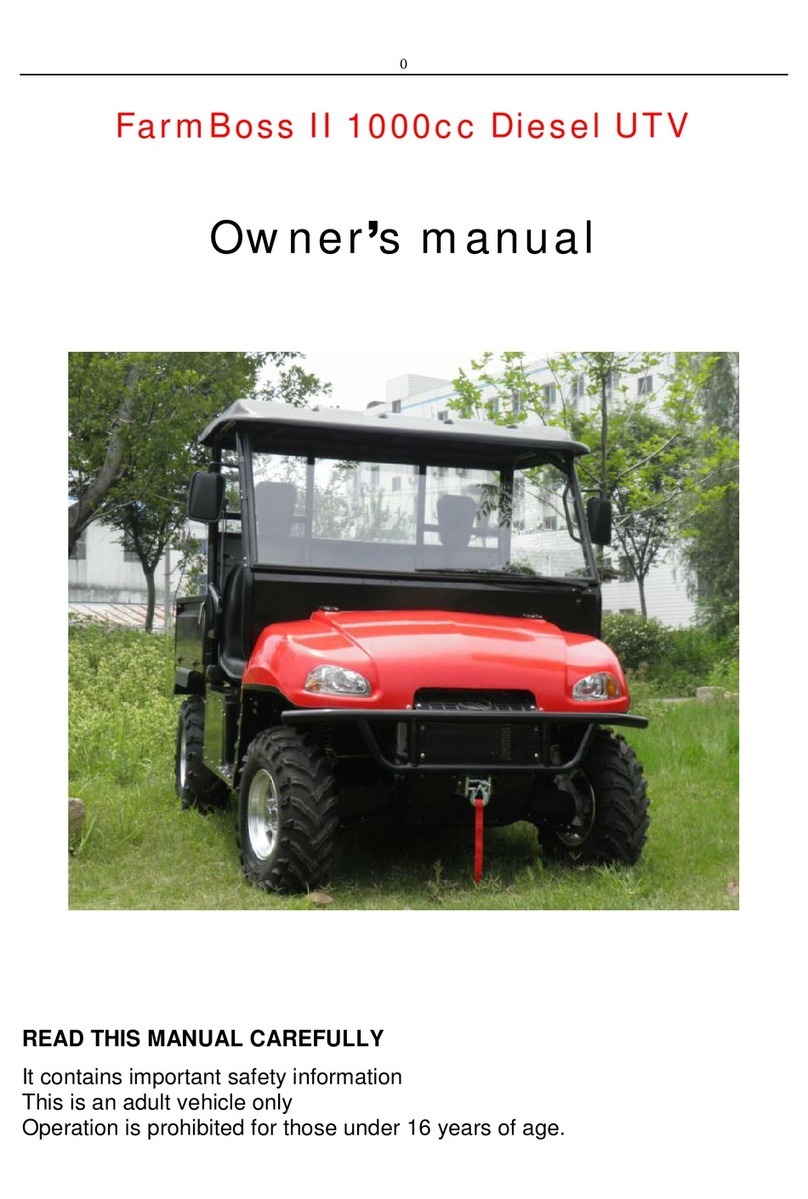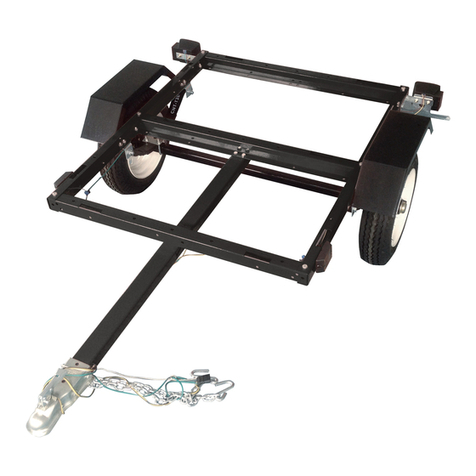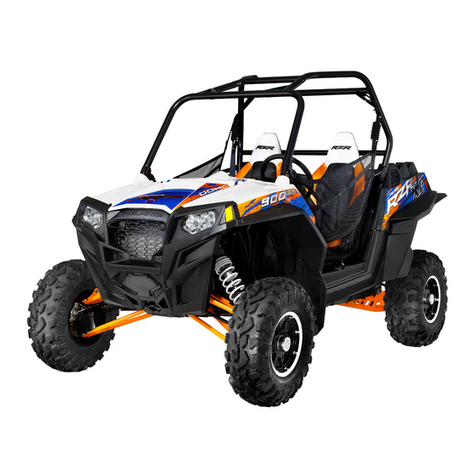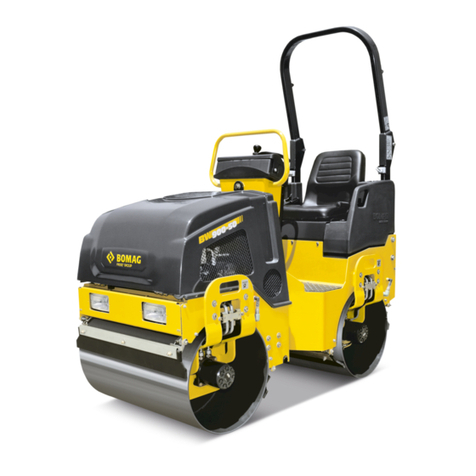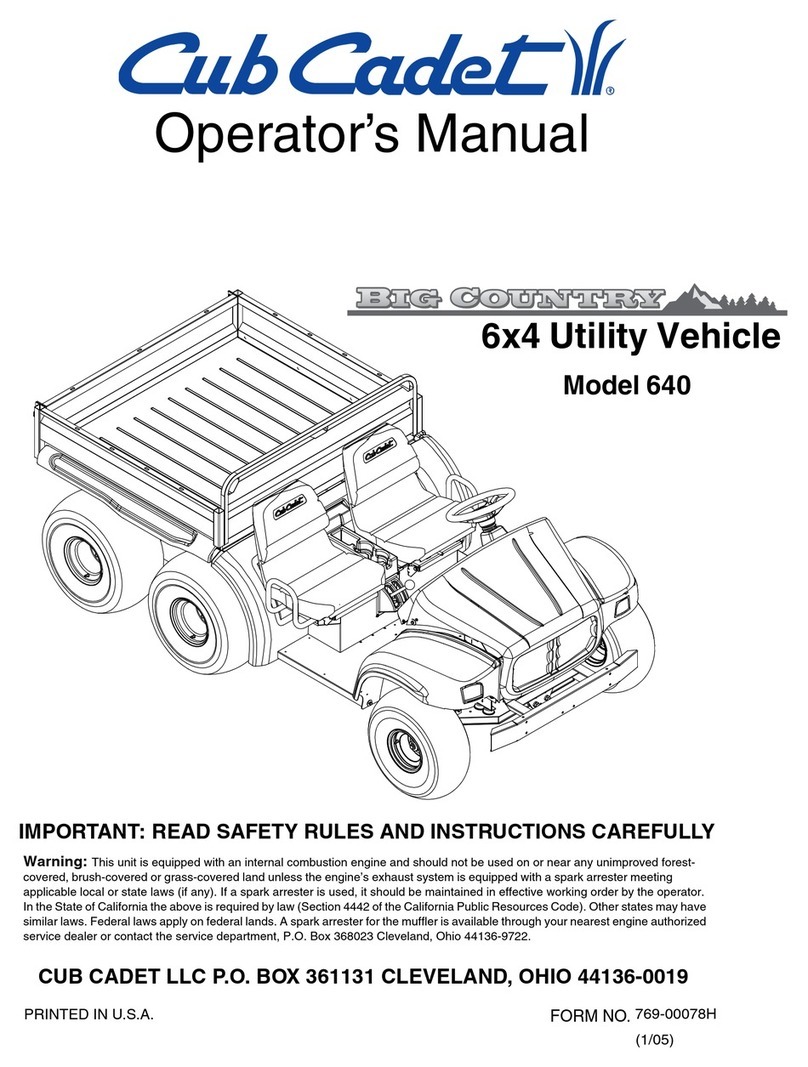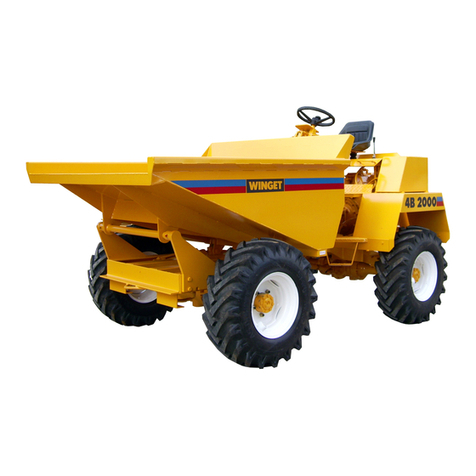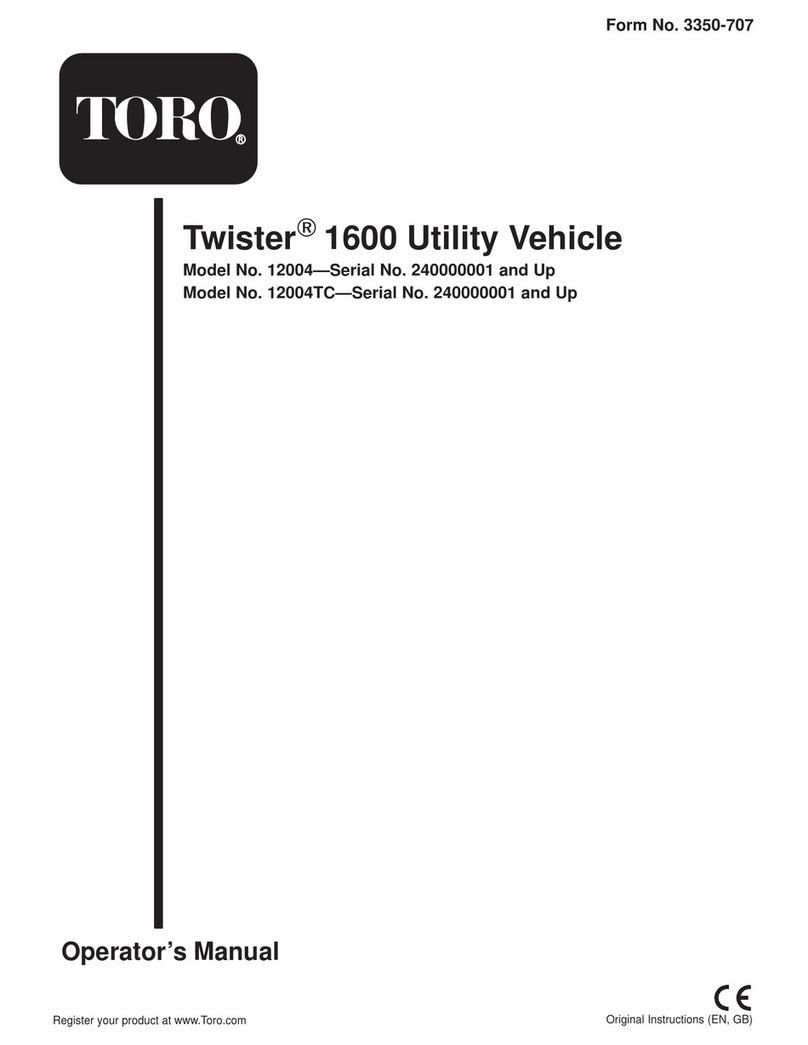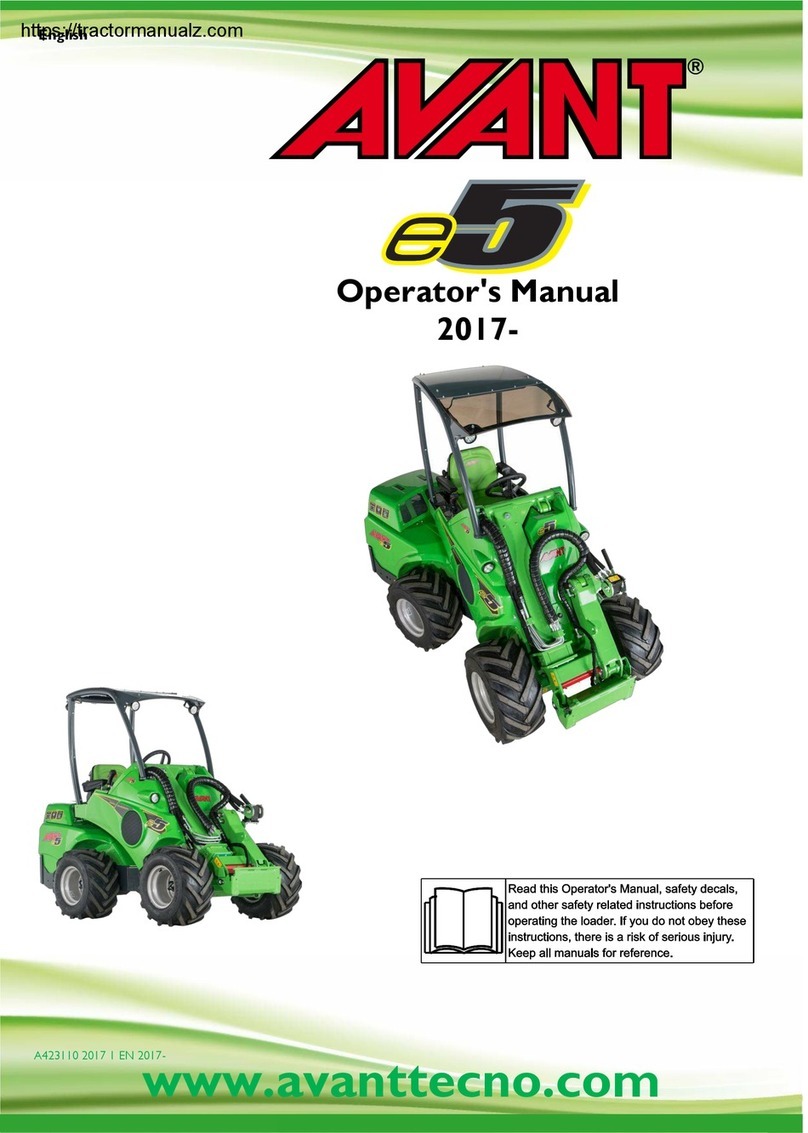Peco X20 Convertible Trailer Vac User manual

OPERATOR’S MANUAL
COLLECTION SYSTEM
& UTILITY TRAILER
P
PP
PECO
PECOPECO
PECO
PECOPECO
P
PP
P
PP
P
P
PECO
PECO
RRR
MANUAL PART#: Q0547 Release: Sept 2019
ASSEMBLY OPERATION MAINTENANCE
Model# 4920, 6930 & 7930
Briggs & Stratton 900 Series 6930
6.5 HP Briggs & Stratton Vanguard 7930
Briggs & Stratton 900 Series 4920

2
GRASS COLLECTION SYSTEM
TABLE OF CONTENTS
Preparation of Parts - - - - - - - - - - - - - - - - - - - - - - 6-7
Blower Cone Installation - - - - - - - - - - - - - - - - - - - 11
Safety - - - - - - - - - - - - - - - - - - - - - - - - - - - - - - 2
Wheel Installation - - - - - - - - - - - - - - - - - - - - - - 9-10
Removing Trailer Pan - - - - - - - - - - - - - - - - - - - - - 7
Introduction- - - - - - - - - - - - - - - - - - - - - - - - - - - - 5
I INTRODUCTION AND DESCRIPTION - - - - - - - - - - - - 5
Engine/Blower/Blade Assembly Installation - - - - - - - 11
Attaching Trailer to Trailer Pan - - - - - - - - - - - - - - - 8
II INSTALLATION FOR USE - - - - - - - - - - - - - - - - - - - - - 6
Upper Hose Installation - - - - - - - - - - - - - - - - - - - 12
Trailer Top Installation - - - - - - - - - - - - - - - - - - - - 10
SECTION PAGE
Safety Alert Symbols- - - - - - - - - - - - - - - - - - - - - - 3
Dump Handle Installation - - - - - - - - - - - - - - - - - - - 8-9
Warranty - - - - - - - - - - - - - - - - - - - - - - - - - - - - - 4
Wooden Support Removal - - - - - - - - - - - - - - - - - 7
Description - - - - - - - - - - - - - - - - - - - - - - - - - - - - 5
Removing Trailer from Pallet - - - - - - - - - - - - - - - - 8
Inlet Ring Installation - - - - - - - - - - - - - - - - - - - - - 11
Attaching Trailer to Tractor - - - - - - - - - - - - - - - - - 12
SECTION PAGE
Engine Stay Assembly Installation - - - - - - - - - - - - - 13
Universal Boot Installation - - - - - - - - - - - - - - - - 18-20
Lower Hose Installation - - - - - - - - - - - - - - - - - - - 20
Impeller Blade Removal/Replacement - - - - - - - - - - 21
Exploded Views & Parts List - - - - - - - - - - - - - - 22-37
Engine Stay Adjustments - - - - - - - - - - - - - - - - 14-17
Overall Parts List - - - - - - - - - - - - - - - - - - - - - - 38-40
Safety Decals - - - - - - - - - - - - - - - - - - - - - - - - - - 41
III OPERATING INSTRUCTIONS - - - - - - - - - - - - - - - - - - 42
General Safety - - - - - - - - - - - - - - - - - - - - - - - - - 42
Disengagement Of The PTO Assembly- - - - - - - - - - 42
Unloading The Collection System - - - - - - - - - - - - - 42
IV MAINTENANCE - - - - - - - - - - - - - - - - - - - - - - - - - - - - 42
Lubrication - - - - - - - - - - - - - - - - - - - - - - - - - - - - 42
Operation & Tips On Mowing - - - - - - - - - - - - - - - - 42
Troubleshooting - - - - - - - - - - - - - - - - - - - - - - - - - 45
Parts And Service Information- - - - - - - - - - - - - - - - 43
Torque Specifications - - - - - - - - - - - - - - - - - - - - - 44
V PARTS AND SERVICE - - - - - - - - - - - - - - - - - - - - - - - 43
Maintenance Checklist - - - - - - - - - - - - - - - - - - - - 42
SAFETY
anyone who is not acquainted with the Safety Instructions to use your attachment.
when the container is empty.
you.
6. Do not attempt to operate your machine when not in the driver’s seat.
2. Know the controls and how to stop them quickly. READ THE OPERATOR’S MANUAL!
3. Do not allow children to operate the machine. Do not allow adults to operate it without proper instruction.
4. Be especially watchful of children and pets entering into the area while operating.
1. Read the operator’s manual carefully and familiarize yourself with the proper use of your attachment. Do not allow
7. Always shut off blades and engine when emptying the container.
5. Keep your eyes and mind on your machine while mowing or operating your attachment. Don’t let others distract
removing clogs, removing or replacing hose, boot, blower cone, or performing any maintenance.
9. Mow across the face of slopes (not more than 10 degrees); never up and down the face.
8. Stop machine, shut off deck attachment, set parking brake, shut off engine and remove ignition key before
10. It is recommended that the container be emptied when half full while operating on slopes. Start mowing on slopes
12. Wear hearing protection.
foreign object.
11. Inspect your lawn and remove any foreign objects before mowing. Never deliberately run the mower across any
13. Wear eye protection to prevent debris from getting into your eyes.
2017 (v1.0)

3
SAFETY
Should be followed by the operator to avoid accidents. When
and heed its advice. Failure to comply with safety precautions
Safety Signs
WARNING! NEVER operate the mower unless the discharge guard and either the deflector assembly or
the vacuum collector adapter are fastened securely in place.
WARNING! To avoid serious injury, perform maintenance on the vacuum collector; ONLY AFTER
STOPPING THE MOWER’S ENGINE AND WAITING FOR ALL MOVING PARTS TO COME TO A
COMPLETE STOP. Set the parking brake. Always remove the ignition key before beginning maintenance.
WARNING! For your own personal safety, ALWAYS mow ACROSS the face of slopes and
NEVER UP and DOWN the face. NEVER attempt to mow excessively steep slopes, and use
caution when turning on any slope.
The signal words DANGER, WARNING, and CAUTION are used on the equipment safety signs. These words
are intended to alert the viewer to the existence and the degree of hazard seriousness.
This Safety Alert Symbol means: “ATTENTION! BECOME
WARNING! Do not work around the mower deck boot or the blower area until you are certain that the mower
blades and the blower impeller have stopped rotating.
could result in death or serious bodily injury.
you see this symbol, carefully read the message that follows
This symbol is used to call attention to safety precautions that
Safety Alert Symbol
ALERT! YOUR SAFETY IS INVOLVED!”
DANGER
!
CAUTION
This signal word indicates a potentially hazardous situation which, if not
avoided, will result in death or serious injury.
This signal word indicates a potentially hazardous situation which, if not
avoided, could result in death or serious injury.
It may also be used to alert against unsafe practices.
This signal word indicates a potentially hazardous situation which, if not
avoided, will result in minor or moderate injury.
It may also be used to alert against unsafe practices.
White letters on RED
Black letters on ORANGE
Black letters on YELLOW
WARNING
!
!
!
2017 (v1.0)

4
from the date of delivery of the product to the original purchaser when used for in commercial applications.
Products designated as 'Residential' are warrantied for 90 days from the date of delivery of the product to the
original purchaser when in commercial applications.
1. PRODUCT WARRANTY: Any part of any consumer product, which is defective in material or
workmanship as delivered to the purchaser will be repaired or replaced, as PECO elects, without charge for
parts or labor, if the defect appears within 12 months from the date of delivery of the product to the original
purchaser. ALL DEFECTIVE PARTS MUST BE RETURNED TO PECO FOR INSPECTION TO DETERMINE
VALIDITY OF WARRANTY CLAIMS. Freight and mailing will be borne by the customer.
A. WHAT IS UNDER WARRANTY?
PECO LIMITED WARRANTY FOR NEW PRODUCTS
2. PARTS REPLACED DURING WARRANTY: Any new PECO part which is furnished in performance of
this warranty and is defective in material or workmanship as delivered to the purchaser will be repaired or
replaced, before the expiration of the original warranty period, whichever is later.
PECO extends the following warranties to the original purchaser of each new PECO consumer product subject
to the following limitations.
Engines and batteries attached to PECO products are covered under a separate warranty by the respective
manufacturer.
E. ACCIDENTS AND NORMAL MAINTENANCE
Call PECO for Return Authorization. Damaged or broken parts other than engines or batteries, must be
returned to New PECO, Inc. at 10 Walden Drive, Arden, NC 28704 before any warranty adjustment can be
authorized. At the time of requesting warranty adjustment, the purchaser must present evidence of the date of
delivery of the product. The purchaser shall pay any charge for the product to and from Arden, NC.
Neither New PECO, Inc. nor any company affiliated with it makes any warranties, representations or promises
as to the quality of performance of its products other than those set forth herein. Except as described above,
New PECO, Inc. makes no other warranties AND SPECIFICALLY DISCLAIMS ANY AND ALL IMPLIED
WARRANTIES OF FITNESS AND MERCHANTABILITY.
3. COMMERCIAL USE: Products put to personal use around a single household or residence is considered
'Residential'; Products put to any business use (agricultural, commercial, or industrial) or used at multiple
locations is considered 'Commercial.' Products designated as 'Commercial' are warrantied for 12 months
G. PRODUCTS USED FOR RENTAL OR LEASE PURPOSES ARE WARRANTIED FOR 45 DAYS
FROM DATE OF ORIGINAL SALE ONLY
The only remedies the purchaser has in connection with the breach or performance of any warranty on New
PECO, Inc. consumer products are set forth above. In no event will PECO be liable for special incidental or
consequential damages.
H. REMEDIED EXCLUSIVE
1. NO SERVICE CENTER WARRANTY
C. ITEMS NOT COVERED BY PECO WARRANTY
D. UNAPPROVED ALTERATION OR MODIFICATION
F. NO REPRESENTATIONS ADDITIONAL WARRANTIES, DISCLAIMER
The selling Service Center makes no warranty on his own on any item warranted by New PECO, Inc. unless he
delivers to purchaser a separate written warranty certificate specifically warranting the item. The dealer has no
authority to make any representation or promise on behalf of PECO or to modify the terms of this warranty in
any way.
B. SECURING WARRANTY ADJUSTMENTS
All obligations of New PECO, Inc. under this warranty shall be terminated if products are altered or modified in
ways not approved by New PECO, Inc.
The warranty covers only defective material and workmanship. It does not cover depreciation or damage
caused by normal wear, accident, improper use or abuse of products. The cost of normal maintenance and
normal replacement of service items such as belts, cutting blades, hoses, etc., which are not defective shall be
paid for by the purchaser.
2017 (v1.0)

5
Introduction
We are pleased to have you as a PECO customer. Your
collection system has been designed to give you a low
maintenance, simple, and effective way to collect the
grass clippings from your mower. The manuals are
provided to give you the necessary instructions to
properly mount, operate and maintain the collection
system on your mower. Please read this manual
thoroughly. Understand what each control is for and how
to use it. Observe all safety decal precautions on the
machine and noted throughout the manual.
NOTE: All references made to right, left, front, rear, top
or bottom are as viewed from the normal operator’s
position on the mower.
Description
The grass collection system is designed for turf
maintenance where there is a need to collect the grass
clippings as the mower cuts the turf. It is also used for
picking up leaves in pre-season and post-season clean-
up. The engine/blower/blade assembly, is mounted on
the right side of the unit. The blower draws grass
clippings from the discharge area up and back to the
container mounted to the rear of the mower. The
operator can engage the engine/blower/blade assembly
by starting the engine. Once the container is full of
clippings, the operator can remove the rear door and
then easily pull and lift the handle to dump.
Section I - INTRODUCTION AND DESCRIPTION

6
Note: The following instructions are used in the
Preparation Of Parts
installation of both the X20 Trailer Vac & X30 Trailer Vac.
PECO Trailer Vacs are shipped as shown in Figure A.
Section II - INSTALLATION FOR USE
Remove the door as shown in Figure C. Rotate the red
reflectors to release the door. Then lift up and out.
Remove the shrink wrap as shown in Figure B.
Shipping Crate
Cut and Remove
Shrink Wrap
Rotate
Reflectors
Figure A
Figure B
Figure C
Remove the hoses as shown in Figure D.
Release the (2) rubber straps (PER SIDE) as shown in
Figure E.
Remove the lightweight top as shown in Figure F.
Release
Rubber Straps
Figure D
Figure E
Figure F

7
Remove all parts from trailer pan as shown in Figure G.
Cut and remove the (2) retaining wires from the trailer
pan. Refer to Figure B.
Remove the (2) shipping screws from the front trailer
pan as shown in Figure A.
Removing Trailer Pan
Remove (2)
Shipping Screws
Cut (2)
Retaining Wire
Figure G
Figure A
Figure B
Lift the trailer pan off of the chassis and set the trailer
pan upside down as shown in Figure D.
Wooden Support Removal
Using a hammer or pry bar, carefully remove the wooden
supports from the shipping crate. The support consists of
(3) pieces. (2) support legs and (1) top support. Refer to
Figure A.
Using a hammer or pry bar, carefully loosen the top
support and remaining support leg. Refer to Figure B.
Set Trailer Pan
Upside Down
In Preparation
Loosen
Support Leg
Figure D
Figure A
Loosen
Support Top
Figure B

8
Removing Trailer From Pallet
Cut and remove the remaining retaining wires as shown
in Figure A. Then lift and remove the trailer from the
shipping crate as shown in Figure B.
With the trailer upright on the ground, remove the
cardboard from the trailer as shown in Figure C.
NOTE: Do not remove the engine mount arm zip tie.
Cut and Remove
Shipping Wire
Remove Trailer
Figure A
Figure B
Attaching Trailer to Trailer Pan
Flip the trailer over and place on the trailer pan as shown
in Figure A.
Attach the trailer to the trailer pan using (2) clevis pins
P#(K0082) and (2) hair pin clip P#(K0086). Refer to
Figure B.
Remove Cardboard
Place Trailer On
The Trailer Pan
Secure Using
(2) Clevis Pins and
(2) Hair Pin Clips
Figure C
Figure A
Figure B
Dump Handle Installation
Remove the existing 3/8” nut from the pivot bolt as
shown in Figure A.
Pivot Bolt
3/8”-16
Nut
Figure A

9
Note: The Dump Handle contains 2 holes that are
specific to the type of Trailer Vac it is being installed on.
The First hole is for the X30 Trailer Vac and the Second
hole is for the X20 Trailer Vac.
Insert the dump handle through the slot in the trailer pan
and through the handle spring P#(J0310) as shown in
Figure B.
Insert the pivot bolt through the hole corresponding with
your Trailer Vac in the dump handle. Secure the handle
to the pivot bolt using the 3/8”-16 Nut that was removed.
Attach the hook end of the spring to the hole in the trailer
pan. Refer to Figure C.
Insert the Handle Grip P#(J0522) onto the end of the
dump handle as shown in Figure D.
Dump Handle
Handle
Spring
Figure B
Attach Spring To
Trailer Pan
3/8”-16 Nut
Handle Grip
Figure C
Figure D
Wheel Installation
Remove the tape from both axles. Refer to Figure A and
Figure B for reference.
Insert the wheels onto the wheel axle as shown in Figure
C. Secure each wheel using (1) 3/4” flat washer
P#(K0061) and (1) 1/8”-1/2” cotter pin P#(K0085). Refer
to Figure C and D.
Remove Tape
From Axle
Tape Removed
From Axle
Insert Wheel
Onto Axle
Figure A
Figure B
Figure C

10
Flip the trailer over onto the wheels in preparation for the
trailer top installation. Refer to Figure E.
NOTE: It is recommended that someone assist you
during this step.
(1) Flat Washer
(1) Cotter Pin
PER WHEEL
Trailer Top Installation
Lift the trailer top and place onto the trailer pan as shown
in Figure A.
Secure the trailer top to the trailer pan with the (4) rubber
straps. Refer to Figure B.
Attach the trailer door to the assembly. Secure the door
by rotating the (2) red reflectors on the trailer top. Refer
to Figure C.
Place Trailer Top
Onto The Trailer Pan
Rubber Straps
Rotate
Reflectors
Figure A
Figure B
Figure C
Figure D
Figure E

11
Secure the engine/blower/blade assembly to the engine
mount arm with (4) 5/16”-18 x 1-1/2” hex bolts
P#(K1157) and (4) 5/16”-18 locknuts P#(K2516). Refer
to Figure B.
Engine/Blower/Blade Assembly
Installation
Remove the engine/blower/blade assembly from the
box. Place the engine on top of the engine mount arm as
shown in Figure A.
(4) 5/16”-18 x 1-1/2”
Hex Bolts &
(4) 5/16”-18 Locknuts
Engine
Mount Arm
Engine/Blower
Blade Assembly
Housing Opening
Should Face Mower
Deck Discharge
Blower Cone Installation
Insert the blower cone as shown in Figure B and secure
with the existing blower cone hardware.
Loosen the blower cone hardware just enough so that
you can remove the plastic cover from the blower
housing shown in Figure A.
Plastic Cover
Blower Cone
Hardware
Blower
Cone
Blower Cone
Hardware
Figure A
Figure B
Figure A
Figure B
Pull the Locking Pin P#(K0095) up from the Inlet Ring P#(V1052). Position the 6” Inlet P#(E8010) into the Inlet Ring
and secure the 6” Inlet by pressing the Locking Pin back down. Refer to Figure A.
Inlet Ring Installation
Figure A
6” Inlet
Locking Pin
Inlet Ring

12
Upper Hose Installation
Before attaching the Upper Hose, place a Hose Clamp
P#(J0060) relatively loose on both ends of the Upper
Hose. Then insert one end of the 6” upper hose onto the
blower outlet as shown in Figure A.
Secure the upper hose by tightening both hose clamps.
Refer to Figure C.
Attach the other end of the 6” upper hose to the inlet on
the trailer top as shown in Figure B.
Blower Outlet
6” Upper
Hose
Inlet
Upper Hose
Hose Clamp
Back the tractor up to the trailer tongue. Lift the trailer
tongue and slide onto the tractor hitch as shown in
Figure A.
Attaching Trailer To Tractor
Secure the trailer tongue to the hitch with (1) hitch pin
assembly P#(A0312). Refer to Figure B.
Secure the hitch pin using (1) hair pin clip P#(K0086).
Refer to Figure C.
Lift Trailer Tongue
And Slide Onto Hitch
Hitch Pin
Hair Pin
Clip
Figure A
Figure B
Figure C
Figure A
Figure B
Figure C

13
Engine Stay Assembly Installation
Note: Depending on the manufacturer and style of your
tractor, the engine stay assembly mounting procedure
may vary slightly from the instructions listed below.
Cut the zip tie that secures the engine mount arm to the
trailer. Refer to Figure A.
Attach the ball clevis P#(B0132) to the rear left of the
tractor. There should be an existing hole in the tractor
frame for this ball clevis to mount to. Secure the ball
clevis using (1) 3/8”-16 x 1” hex bolt P#(K1191) and (1)
3/8” lock washer P#(K0048).
Rotate the engine towards the deck opening of the
tractor as shown in Figure B. (See Engine Stay
Adjustments, pg. 14 through 17).
NOTE: If there is not an existing hole, position the ball
clevis as shown in Figure C, then mark the position. Drill
a hole in the tractor frame using a 3/8” drill bit.
Engine
Mount Arm
Cut Zip
Tie
Rotate
Towards
Deck
Opening
Attach the ball clevis clamp assembly P#(A0336) to the
ball clevis using (1) 5/16”-18 x 2” hex bolt P#(K1159) and
(1) 5/16”-18 locknut P#(K2516). Thread the adjusting rod
P#(B4311) into the ball clevis clamp assembly as shown
in Figure D. Insert the adjusting rod into the mounting
hole on the engine mount arm. Secure the adjusting rod
with (1) hair pin clip P#(K0099) and (1) 1/2” flat washer
P#(K0055). Refer to Figure D and E for reference.
Adjusting
Rod
Ball Clevis
Clamp Assy
Ball
Clevis
Ball
Clevis
Clamp
Hair Pin
Clip
and Washer
Nyloc
Nut
Hex
Bolt
Adjusting
Rod
Figure D
Figure E
Figure A
Figure B
Ball Clevis
Rear Frame
Of Tractor
Figure C

14
Engine Stay Adjustments
With your Engine Stay mounted it is recommended to position the Engine so that it sits between the rear end tires
and is angled about 35° to the right from the center of your tractor. This will keep the Engine stationary at the same
position when the Trailer Vac swings left or right. Refer to Figure A, Figure B & Figure C for Engine position on a
riding Lawn Tractor.
Position from
Center < 35°
Figure A

15
Figure B
Figure C
View of Collection Unit sitting to the Right of Operator
View of Collection Unit sitting to the Left of Operator

16
Figure D
Figure D - Figure F are views showing the Engine Positioning on a Zero Turn Mower.
Position from
Center < 35°

17
Figure E
Figure F
View of Collection Unit sitting to the Right of Operator
View of Collection Unit sitting to the Left of Operator

18
Position the plastic boot over the opening on the mower
deck and trace the opening outline onto the plastic boot.
Universal Boot Installation
Remove the discharge chute from the mowing deck as
shown in Figure A.
Refer to Figure B.
NOTE: To prevent injury, wear the appropriate personal
protection equipment when drilling or cutting plastic boot.
Place plastic boot on a secure surface and carefully drill
a hole into the plastic boot in preparation for the cutout.
Use a 3/8” or 1/2” drill bit. Refer to Figure C for hole
location.
Figure 2-16a
Remove
Discharge
Chute
Trace Outline Of
Deck Opening
Onto The Plastic Boot
!CAUTION
Place the plastic boot against the deck opening again
and check for blade clearance. Trace the outline of the
blade extent (with clearance) onto the bottom edge of
the boot. Refer to Figure E.
Using a jigsaw, cut along the traced outline and the
bottom edge of the plastic boot. Discard the cutout
portion of the boot. Refer to Figure D.
Drill Here
Deck Opening
Outline
Cut Along The
Traced Outline
Cut Along
Bottom Edge
Check For
Blade Clearance
Figure C
Figure D
Figure E
Figure A
Figure B

19
Slide Plate
Deck Bracket
Fasten the deck bracket P#(B2306) to the slide plate
P#(B2307) using (2) 1/4”-20 x 5/8” carriage bolts
P#(K1010) and (2) 1/4”-20 nylon flange locknuts
P#(K2014). Refer to Figure G.
Position the boot over the deck opening and check for
any gaps in the fit. Adjust the cut as needed. Make sure
there are no gaps between the plastic boot and the
mower deck. This will help prevent grass blowout.
If necessary, cut out the traced underside of the plastic
boot to allow for blade clearance. Refer to Figure F.
Trace the (2) holes from the deck bracket onto the
mower deck.
Place the plastic boot and deck bracket (with slide plate
attached) firmly against the mower deck as shown in
Figure H. Make sure there are no gaps between the
plastic boot and the mower deck.
Cut Along
Traced Outline
Drill the (2) traced holes in the mower deck using 1/4”
drill bit as shown in Figure K.
Drill the (2) holes traced onto the plastic boot with 1/4”
drill bit as shown in Figure J.
Center the upper clamp plate P#(B2308) over the slide
plate and trace the (2) holes onto the plastic boot. Refer
to Figure I.
Trace (2) Holes
Onto Mower Deck
Trace (2) Holes
Onto The Plastic Boot
Upper Clamp
Plate
Drill (2) Holes
With 1/4” Bit
Drill (2) Holes Into
Mower Deck With 1/4” Bit
Figure I
Figure J
Figure K
Figure F
Figure G
Figure H

20
Insert (2) 1/4”-20 x 1” carriage bolts into the lower clamp
plate P#(B2039). Insert the lower clamp plate through
the cutout in the plastic boot. Push the carriage bolts in
the lower clamp plate up through the holes drilled in the
plastic boot. Refer to Figure L.
Insert the upper clamp plate P#(B2308) onto the (2)
carriage bolts as shown in Figure M. Secure the upper
clamp plate using (2) 1/4”-20 wing nuts P#(K1129).
Slightly loosen the (2) wings nuts on the plastic boot.
Insert the slide plate in between the upper clamp plate
and the plastic boot. While pressing the boot firmly
against the mower deck, tighten the (2) wing nuts as
shown in Figure N.
Lower Clamp
Plate w/ Carriage
Bolts
Upper Clamp
Plate
(2) Wing Nuts
Insert Slide Plate In
Between Upper Clamp
Plate And Plastic Boot
Note: The lower hose must be cut to fit your machine.
Do not cut the hose until you have tried to fit it on your
machine. Remember that the hose has to be long
enough to allow for enough clamping surface between
the blower cone and the deck boot.
Attach one end of the 7” lower hose to the blower cone
and the other end of the hose to the plastic boot. Secure
the lower hose using (2) hose clamps P#(J1000). Refer
to Figure A for reference.
Lower Hose Installation
7” Lower
Hose
Hose
Clamp
7” Lower
Hose
Figure A
Figure L
Figure M
Figure N
This manual suits for next models
1
Table of contents
Other Peco Utility Vehicle manuals
